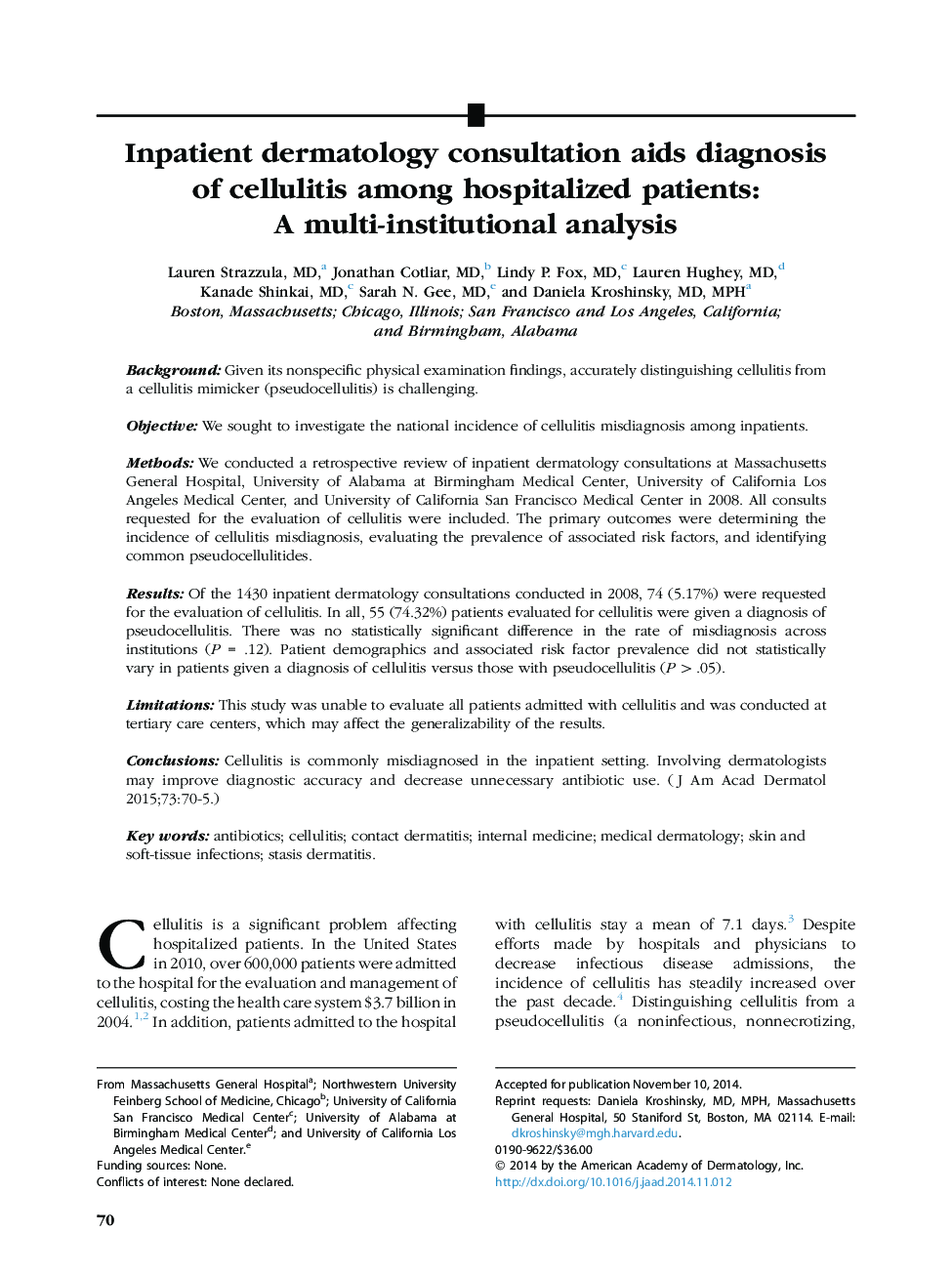| Article ID | Journal | Published Year | Pages | File Type |
|---|---|---|---|---|
| 6071444 | Journal of the American Academy of Dermatology | 2015 | 6 Pages |
BackgroundGiven its nonspecific physical examination findings, accurately distinguishing cellulitis from a cellulitis mimicker (pseudocellulitis) is challenging.ObjectiveWe sought to investigate the national incidence of cellulitis misdiagnosis among inpatients.MethodsWe conducted a retrospective review of inpatient dermatology consultations at Massachusetts General Hospital, University of Alabama at Birmingham Medical Center, University of California Los Angeles Medical Center, and University of California San Francisco Medical Center in 2008. All consults requested for the evaluation of cellulitis were included. The primary outcomes were determining the incidence of cellulitis misdiagnosis, evaluating the prevalence of associated risk factors, and identifying common pseudocellulitides.ResultsOf the 1430 inpatient dermatology consultations conducted in 2008, 74 (5.17%) were requested for the evaluation of cellulitis. In all, 55 (74.32%) patients evaluated for cellulitis were given a diagnosis of pseudocellulitis. There was no statistically significant difference in the rate of misdiagnosis across institutions (PÂ = .12). Patient demographics and associated risk factor prevalence did not statistically vary in patients given a diagnosis of cellulitis versus those with pseudocellulitis (P > .05).LimitationsThis study was unable to evaluate all patients admitted with cellulitis and was conducted at tertiary care centers, which may affect the generalizability of the results.ConclusionsCellulitis is commonly misdiagnosed in the inpatient setting. Involving dermatologists may improve diagnostic accuracy and decrease unnecessary antibiotic use.
